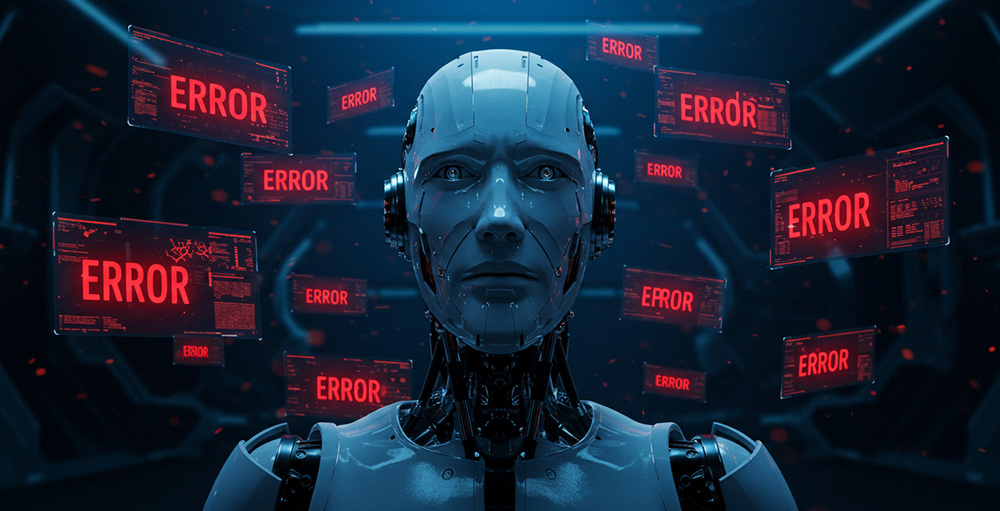AI may be everywhere, but scepticism is rising. Citing a recent MIT Press article that revealed an alarming 95% of AI pilots fail, Richard Davies, OutSystems’ Director of Strategic Customers (APAC), challenged IT Leaders to look beyond the hype. “Almost every company is exploring these technologies,” he said, “but it’s not usually the technology itself that causes failure. It’s the human element – how projects are approached, supported and governed.”
To illustrate the point, Davies zeroed in on the two areas of AI making the biggest waves in software development today: agentic AI and vibe coding. Both have the potential to radically reshape how enterprises operate, but without proper structure and oversight, they can lead to chaos.
The 4 key obstacles to Agentic AI
AI agents have the power to transform work by coordinating workflows, making decisions, and automating complex processes. Yet most organisations stumble when trying to put them into practice. Davies identified four recurring obstacles:
- Data Quality: It is challenging for organisations to gather all the necessary data to build effective agentic applications. Without sufficient and accurate context, AI models like ChatGPT can introduce bias or “hallucinate” data, leading to inaccurate answers.
- AI Governance: Many organisations face significant challenges in how AI is being rolled out. A decentralised approach to AI adoption, where AI is “sprinkled” across various products, is a headache to manage and prevents effective leveraging of AI across the entire organisation.
- Workflow Automation: While workflow automation, such as ticket deflection, is a typical pattern for implementing AI, many companies struggle with how to keep humans in the loop and track the return on investment (ROI).
- User Experience: The most common pattern for agentic AI involves keeping a human in the loop, where humans transition from content creators to content reviewers. User interfaces (UIs) must evolve to support collaboration and trust.
An approach to Agentic AI that works
According to Davies, the OutSystems AI-powered low-code platform enables IT Leaders to tackle these challenges head-on. Its Workbench tool makes it significantly easier to embed agentic AI into existing applications, turning complex ideas into practical, scalable solutions.
On the data front, OutSystems creates a unified view across disparate systems, enabling real-time or near-real-time access regardless of original location or format. This not only improves data quality but also minimises the need for heavy ETL processes, storage duplication, and unnecessary replication, delivering greater agility, stronger security, and lower costs.
Just as importantly, the platform enforces centralised AI governance. By consolidating oversight, it builds a single knowledge base that can be applied consistently across multiple use cases and value streams. And safe adoption is further supported by requiring human oversight in automated workflows. Built-in tools enable real-time tracking of time, cost, and token usage, ensuring a measurable ROI and facilitating incremental improvements without introducing chaos.
Finally, OutSystems empowers businesses to maintain trust and accountability by enabling dynamic, personalised user interfaces. These interfaces support human review at critical decision points, ensuring that AI augments workflows without removing people from the loop.
The vibe coding dilemma and how to beat it
Vibe coding, which utilises natural language prompts and generative AI to spin up applications rapidly, is one of the buzziest concepts in tech right now. And the speed with which they create prototypes is awe-inspiring. But Davies was quick to point out the risk of overhyping it as a standalone tool.
“There’s a misconception that anyone can build full enterprise apps using vibe coding,” he explained. “The truth is that enterprises need more than rapid prototypes. They need end-to-end lifecycle coverage, with security, governance, and integration baked in.”
The principles behind OutSystems’ enterprise-ready vibe coding include:
- Full Software Lifecycle Platform: Applying AI not just to the coding part, but throughout the entire software lifecycle, including production-ready prototypes, UX, deployment, integrations, maintenance and application enhancements.
- Comprehensive App Development: Building more than just an agentic bot, considering the entire app with its data and UI.
- Enterprise Guardrails: Incorporating security and privacy assurance through built-in enterprise guardrails.
- Enterprise Awareness: Ensuring the vibe-coded app is built within the existing ecosystem, taking advantage of all available AI assets, data, APIs, and UI components.
Davies also highlighted that OutSystems addresses the business and IT collaboration dilemma with Mentor, an AI-powered suite of tools that generates requirements documents and production-ready, cloud-native applications from plain language input. Crucially, these apps aren’t throwaway prototypes; they’re functional, secure, and built to scale. Mentor goes beyond simple vibe coding.
The key takeaway: AI without the chaos
For Davies, the message is clear: the power of AI must be matched by discipline, governance, and the right platform. OutSystems’ AI-powered low-code approach provides exactly that – enterprise guardrails that enable organisations to experiment, scale, and innovate safely. By embedding AI within a controlled, low-code environment, IT leaders can transform its disruptive potential into future-ready, resilient applications that are suited to an unstable world.

